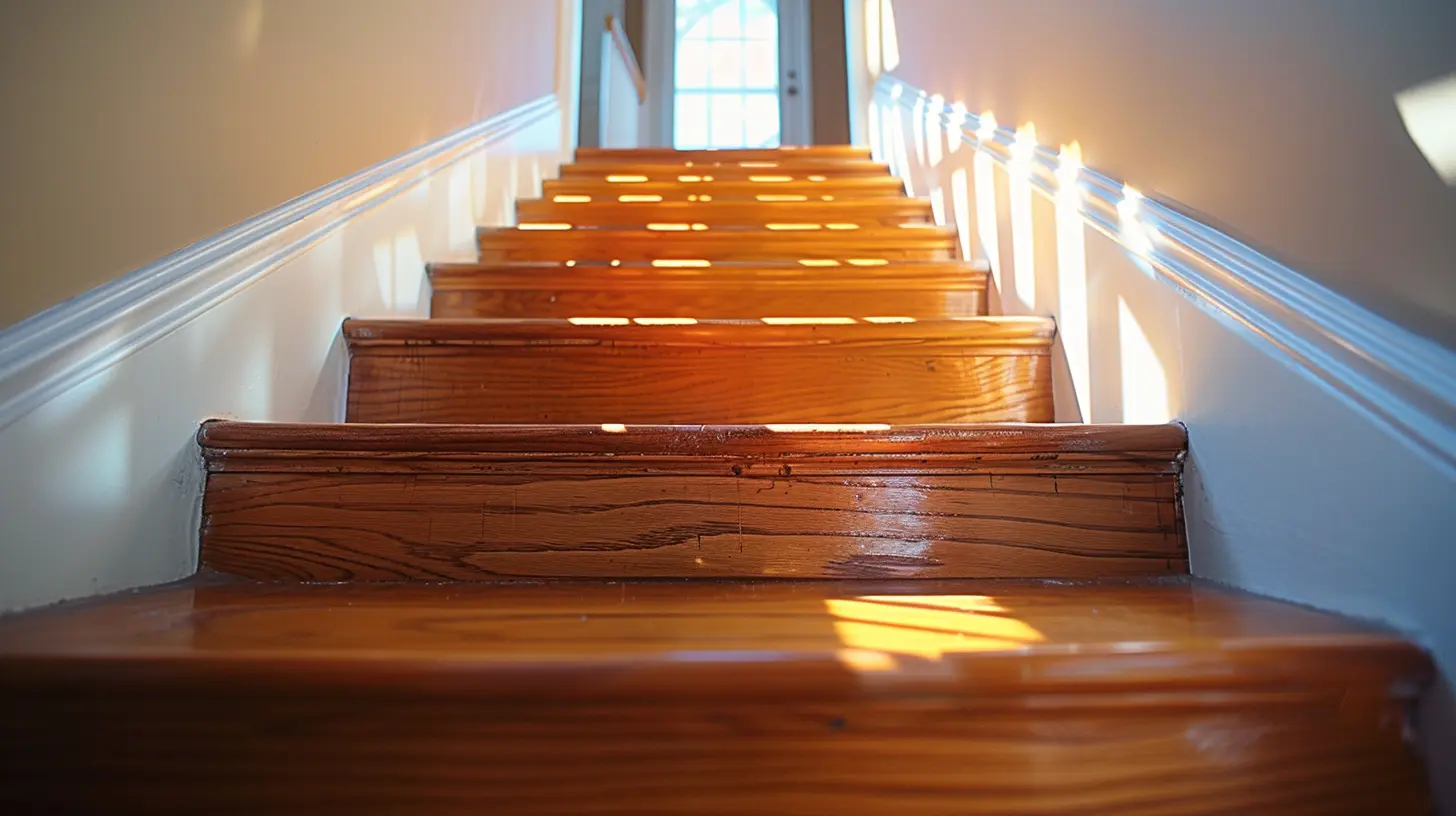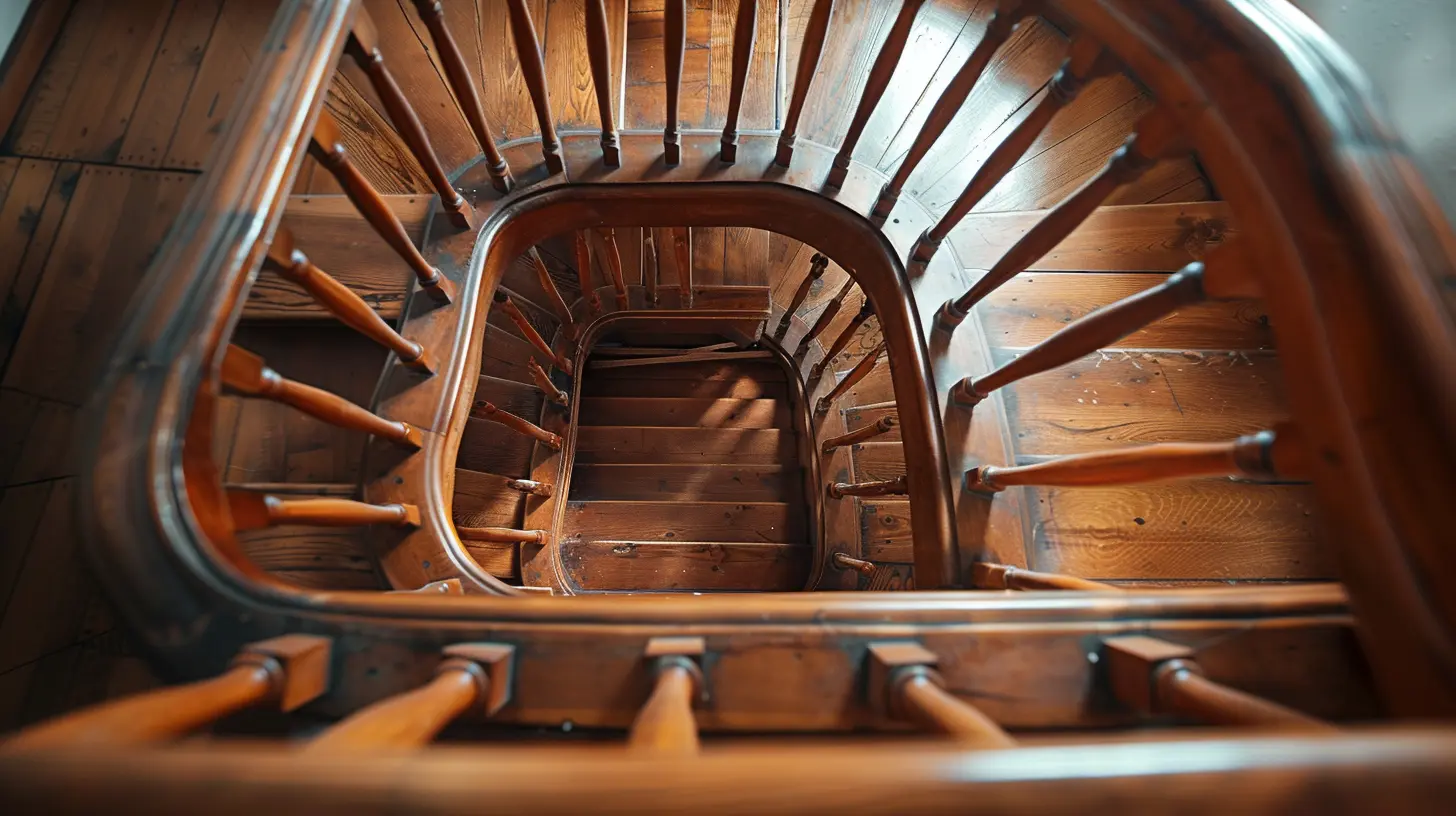Childproofing Your Stairs: Best Practices for Safety
27 October 2025
Having kids is a rollercoaster—one filled with joy, laughter, and, let’s be honest, a whole lot of worry. One of the biggest hazards lurking in your home? The stairs. Little ones are naturally curious, always eager to explore, and unfortunately, they don't have the best sense of balance. That’s why childproofing your stairs is a must.
If you've ever caught your toddler attempting a daring climb or sliding down on their belly like a tiny daredevil, you know exactly what I’m talking about. So, let’s break down the best ways to make your stairs as safe as possible for those adventurous little feet.
Why Stair Safety Matters
Stair-related injuries are more common than you might think. According to studies, thousands of children end up in the emergency room every year due to falls on stairs. A simple trip can result in anything from minor bruises to serious head injuries.The best way to prevent these accidents? Proper childproofing. It’s not just about slapping on a baby gate and calling it a day. You need a combination of barriers, supervision, and smart design choices to create a truly safe environment. 
Best Practices for Childproofing Your Stairs

1. Install High-Quality Baby Gates
Baby gates are your first line of defense. They keep your child from wandering onto the stairs unsupervised. But not all gates are created equal.What to Look for in Baby Gates:
- Pressure-mounted vs. hardware-mounted – Pressure-mounted gates are great for doorways but aren’t the best for stairways since they can be knocked loose. Hardware-mounted gates are much more secure and ideal for stair safety.- Auto-close feature – Ensures that if you forget to latch the gate, it won’t stay open.
- No footholds – Some gates have horizontal bars that little climbers can use like a ladder. Avoid those!
Place gates at both the top and bottom of the stairs. While most people prioritize the top, curious toddlers can also get stuck trying to climb up from the bottom.
2. Ensure Proper Stair Design and Maintenance
If your staircase isn't in good shape, it becomes even more dangerous. Take some time to assess the structure and make adjustments where needed.Things to Check:
- Loose or uneven steps – Fix any wobbly steps ASAP.- Secure handrails – Make sure they’re sturdy and installed at a height where kids can’t easily reach (otherwise, they might try to swing on them).
- Slippery surfaces – Hardwood and tile stairs are slippery for little feet. Adding carpet runners or non-slip stair treads can provide much-needed grip.
Think of it this way: if you wouldn’t walk down your stairs in socks with your eyes closed, it’s probably not the safest setup for a toddler either.
3. Use Stair Rail Guards
Those cute little railings? They might be a nightmare in disguise. If the gaps in your stair banisters are too wide, your child could get their head stuck—or worse, slip through entirely.You can fix this by:
- Installing banister netting or plastic guards to close the gaps.
- Adding plexiglass panels for a more permanent, visually appealing solution.
Until your child understands that stair rails aren’t monkey bars, these simple modifications can be lifesavers.
4. Teach Safe Stair Behavior Early On
While barriers and modifications help, teaching your child how to use the stairs safely is just as important.What to Teach:
- Always hold the handrail when using stairs.- Go slowly and carefully—no running or jumping.
- If crawling up or down, use the three-point contact rule (one hand and two feet, or two hands and one foot on the steps at all times).
Supervised practice makes a world of difference. And let’s be real—kids love mimicking adults, so if they see you using the handrail properly, they’re more likely to follow suit.
5. Keep Stairs Clutter-Free
Ever tripped over a forgotten toy or a stray book on the stairs? Now imagine a toddler navigating that same obstacle course.Get into the habit of keeping stairs completely clear. No toys, no laundry piles, no rogue stuffed animals lying around. The fewer distractions and tripping hazards, the safer your child will be.
A simple rule: If it doesn’t belong on the stairs, it doesn’t stay on the stairs.
6. Improve Stair Visibility
Good lighting can be the difference between a safe walk down the stairs and a complete wipeout. Poor visibility increases the risk of missteps—especially for little kids who are still developing depth perception.How to Improve Visibility:
- Install motion-sensor nightlights along the staircase for those middle-of-the-night wanderings.- Use contrasting colors for stair edges to make them more visible.
- If you have carpeted stairs, ensure there's a consistent pattern (stripes or busy designs can be disorienting).
It’s all about making sure your child can clearly see where each step begins and ends.
7. Encourage Shoe-Free Stairs
Bare feet have much better grip on stairs than socks or slippery shoes. If your stairs are smooth, socks can turn them into a slide.A simple house rule—“No socks on the stairs”—can go a long way. If skipping socks isn’t an option, invest in non-slip socks with rubber grips.
8. Supervise, Supervise, Supervise
Even with all the right precautions in place, supervision is key. A determined toddler might still find a way past the barriers, so keeping an eye on them whenever they’re near the stairs is crucial.If your child is still in the crawling stage, consider using a playpen or gated area to keep them away from stairs when you can’t watch them closely. 
Final Thoughts
Childproofing your stairs isn’t just about preventing bumps and bruises—it’s about giving yourself peace of mind. Kids are naturally curious, and while we can’t protect them from every little fall, we can make our homes as safe as possible.By installing baby gates, ensuring stair maintenance, using rail guards, and teaching safety habits, you’re setting up a secure environment where your child can explore without unnecessary risks.
Remember, childproofing doesn’t last forever. As your little one grows and learns stair safety, you’ll eventually be able to remove some of these precautions. But until then, a little prevention goes a long way.
Because let’s face it—parenting is already stressful enough. The last thing you need is to worry about stair-related accidents when a few simple tweaks can drastically reduce the risk. Stay safe, and happy parenting!
all images in this post were generated using AI tools
Category:
ChildproofingAuthor:

Max Shaffer
Discussion
rate this article
1 comments
Geneva McLoughlin
Childproofing your stairs is not just a precaution—it's a necessity. Implementing effective barriers, securing handrails, and maintaining a clutter-free environment can significantly reduce accidents. Make safety a priority; your child deserves a secure home. Don’t wait—take action today to protect your little explorer!
October 27, 2025 at 5:20 PM

Max Shaffer
Thank you for your insights! Prioritizing stair safety is essential for our little ones, and your tips highlight the importance of proactive measures. Let's ensure all homes are secure for our child explorers!


